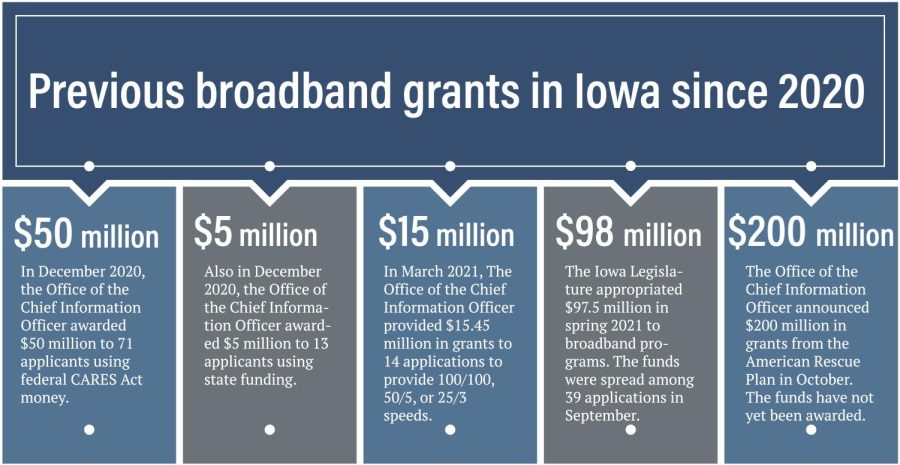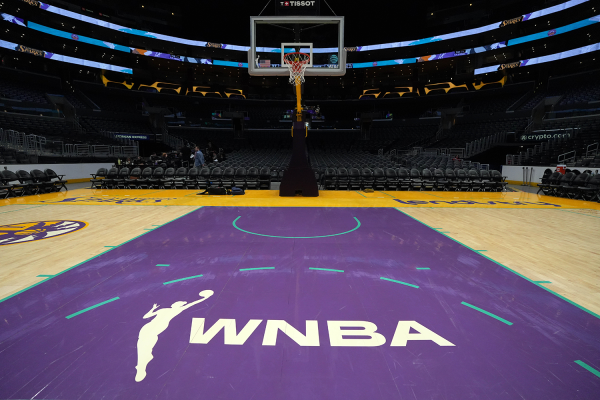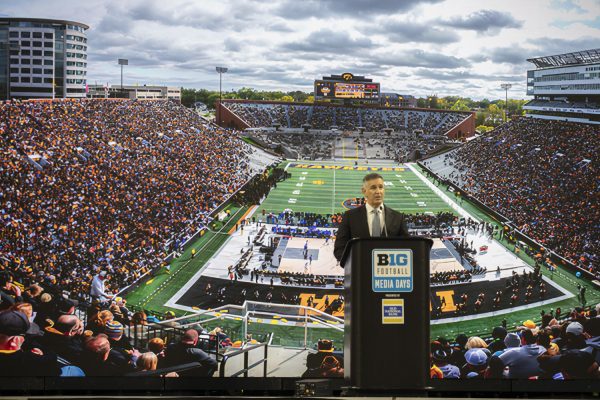Internet providers await federal broadband dollars
A $65 billion investment in rural broadband was included in the federal infrastructure bill, but a slow mapping process has obscured where that money can be spent in Iowa.
Mark Hoffman / Milwaukee Journal
WIN Technology in Eau Claire, owned by 31 mostly small telephone companies, has built a fiber network covering more than 9,200 miles in Wisconsin, Michigan, Illinois and Iowa.
December 5, 2021
With the passing of the federal infrastructure bill, Iowa internet providers are looking to cash in on the third large round of government funding for broadband in a year as the specifics of the process remain uncertain.
At least $100 million of the $65 billion in broadband money allocated by the federal government in November is coming to Iowa. What that money can be spent on, though, is still up in the air.
President Joe Biden signed the federal infrastructure bill, one of his top legislative priorities, on Nov. 15. The bill included money for road improvements, broadband, water quality improvements, and a host of other initiatives. Of Iowa’s congressional delegation, Democratic Rep. Cindy Axne and Republican Sen. Chuck Grassley were the only ones to vote for the bill.
Less than a month after the signing of the bill, a lot remains uncertain about the specifics of how the money will be allocated and what rules will be applied to it, internet providers said. The bill requires that grants be given based on maps by the Federal Communications Commission outlined in the DATA Act passed in March 2020. A year and a half later, those maps still haven’t been drawn.
Chuck Deisbeck, CEO of South Slope in North Liberty, said the company is starting to look into whether the federal infrastructure bill can fit into its expansion plan. South Slope provides internet to areas in Johnson and Linn Counties.
Without the final map and full details of the grants, Deisbeck said South Slope is trying to determine through consulting and other preliminary data where it may be able to build using the infrastructure bill money.
“There’s a lot of information flowing in, and we’re trying to decipher from one consultant to another, where we think some of that mapping and some of those funds might be coming from, so it’s a little bit of overload right now,” Deisbeck said.
The current FCC maps that outline where coverage is lacking are notorious for being inaccurate. To address this, Congress passed the DATA Act in 2020, which was co-sponsored by former Rep. Dave Loebsack, D-Iowa.
The maps required by the DATA Act will be more granular, with the ability to drill down specific locations and households not served by high-speed internet, Iowa Communications Alliance CEO Dave Duncan said.
“We’ll have a much better view of which locations are served and which are not served, so the funding can be targeted to those non-served locations,” Duncan said.
As of now, both the state and federal maps are based on census blocks, small statistical areas that contain between 600 and 3,000 people. If one house in a census block is served in broadband, that block is considered served, even if the rest of it does not have access, Duncan said.
“Nobody that’s a broadband provider has used census blocks as a determination as to where to build or where to their customer base is or anything,” he said. “The feds have just used that as a way to measure.”
But those maps may still be a long way off. The FCC has faced challenges in accurately mapping millions of addresses and properties across the country, according to a September Government Accountability Office report. Providers said they don’t expect the maps to be available until late spring or summer 2022, meaning they likely won’t see the grants until next fall.
Along with the map uncertainty, the specific stipulations of the federal grants haven’t been sorted out yet, Deisbeck said, which also makes planning more difficult. While the broad strokes of the program are defined, the specific details aren’t laid out.
One requirement is that the companies receiving grants provide “affordable” broadband, but Diesbeck said that hasn’t been defined.
RELATED: Tweet claiming Hinson and Miller-Meeks denied Iowans broadband needs context
“Who’s determining what’s affordable?” he said. “So, we gotta be very careful on what we would be agreeing to, so those are the types of things that we’re looking at.”
Internet providers are used to having to work around different rules and maps, Duncan said. Over the past couple of years, broadband grants have been given out by the state, the federal government, and the U.S. Department of Agriculture, all with different requirements.

“What happens is these providers have hopefully done some background research on areas that they’d like to expand to, and then they hope that those areas match up with what the map shows as eligible,” Duncan said.
Scott Havel, general manager of Sharon Telephone Company in Washington County, said providers can make a general plan for where they might want to build out, but that it will likely change once the map and rules are finalized.
“You might have to pull some census blocks right out of the middle of where you’re planning to build,” he said.
Often, providers will build lines to those houses anyway using their own money, Havel said.
“That’s kind of how we’ve approached our grants is … ‘Okay, this area isn’t eligible, but if I get this grant, I’m going to be a mile away from 20 houses, so I’ll go ahead and build out to those on my own,’” he said.
Not every internet provider is likely to be eligible for the infrastructure bill cash. The program is designed to target the least served households in the country, prioritizing areas that don’t have available speeds of 25 megabits download and three megabits upload.
For municipal utilities that provide broadband, that level is already met inside most cities, said Alex Cutchey, director of governmental affairs for the Iowa Association of Municipal Utilities.
“We end up finding that a lot of municipal utilities can’t take advantage of any of the broadband grants because there is at least some existing telecommunication broadband provider within the census tract that is at least providing that minimum standard of 25 down, three up,” he said.
Even before the infrastructure bill, Iowa internet providers had seen a windfall of government money in the past year to expand their networks and close the digital divide. The quest for widespread broadband has been on the policy agenda of both political parties at the state level for years, and Iowa Gov. Kim Reynolds made it a major policy goal in the last legislative session.
According to a November report from broadbandnow.com, Iowa ranks 36th in the nation on several metrics for internet quality. About 11 percent of the state’s residents don’t have access to non-satellite broadband. In average internet speed, the state ranks 48th at 144 megabits per second, with only California and Montana falling below.
While the push for rural broadband was around before 2020, the COVID-19 pandemic exposed the necessity for reliable internet, Heart of Iowa Communications General Manager Bryan Amundson said.
“We have a lot of folks that live in rural areas, and they either work from home or have kids that have homework to be done,” he said. “Especially these last few years of the pandemic just shows that broadband for the rural folks is just as important as it is for the city urban folks.”
In May, Gov. Reynolds signed a bill into law devoting $100 million to rural broadband grants. Reynolds then directed $200 million from the federal American Rescue Plan to award grants to internet providers this fall, and applications for those grants closed last month. Grants have also been awarded by the USDA and the National Telecommunications and Information Administration.
That makes for an exciting, but sometimes complicated, time to be in the business, Amundson said.
“It makes it a little bit more difficult when you get to the application process to make sure you’re following the right ones,” he said. “You don’t get your P’s and Q’s mixed up.”
No one is quite sure whether the recent push will be enough to get broadband to every corner of the state, but experts agreed that Iowa will see a dramatic increase in coverage once the money is dispersed. Havel said he’s hopeful that the $65 billion provided in the bill will be enough to cover almost all of the country.
“With what’s in that bill, depending on how it’s allocated, I can’t hardly imagine that that wouldn’t cover most of the country,” he said. “I’m sure there’s gonna be some outlying areas… but I think the funding that’s in that bill is gonna go a long way to cover broadband for the entire country.”















